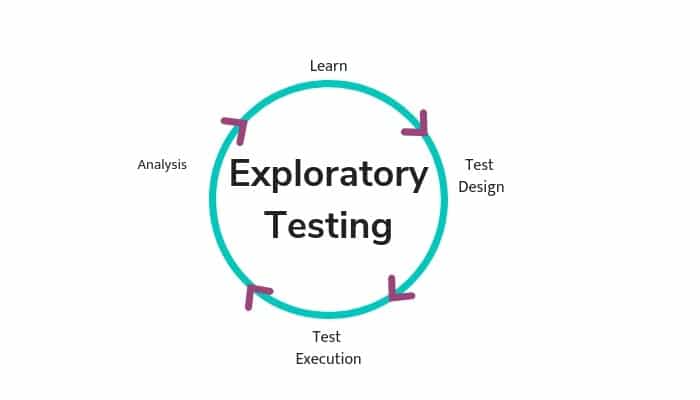The Benefits of Agile Testing
The Benefits of Agile Testing
Agile testing is a software testing approach that follows the principles of agile software development. In agile testing, testing activities are integrated throughout the software development process, rather than being conducted at the end as a separate phase. This means that testing is done continuously and concurrently with other development activities, such as coding and design.
One of the key principles of agile development is the idea of “testing early and often.” This principle emphasizes the importance of starting the testing process as early as possible in the development process and continuing to test throughout the lifecycle of the project. By testing frequently, teams can catch defects early on, when they are typically easier and less expensive to fix. This can help prevent defects from accumulating and becoming more difficult and costly to fix later on in the development process.
The principle of “testing early and often” helps agile teams deliver high-quality software in a rapid, iterative manner. It promotes collaboration between developers, testers, and other stakeholders, and helps teams stay responsive to changing requirements and priorities.
Agile testing involves testing the functionality, performance, and other aspects of a software application at each iteration, or sprint, of the development process. This approach helps ensure that the software meets the needs of the customer and is of high quality, while also allowing for flexibility and rapid response to change.
Agile testing offers a number of benefits over traditional testing
Approaches. Here are a few of the key benefits of agile testing
Improved customer satisfaction
By testing the software at each iteration and gathering frequent feedback from the customer, agile testing helps ensure that the software meets the needs of the customer and is of high quality. This can lead to improved customer satisfaction with the final product.
Increased efficiency
Agile testing allows testing to be integrated throughout the development process, rather than being conducted as a separate phase at the end. This can lead to more efficient testing, as problems and defects can be identified and addressed more quickly.
Faster time to market
By delivering working versions of the software to the customer at the end of each sprint, agile testing allows for a faster time to market for the final product.
Increased flexibility
Agile testing allows for a more flexible approach to software development, as it allows for rapid response to changing customer needs and requirements. This can help ensure that the final product meets the evolving needs of the customer.
Improved quality
By testing the software at each iteration and identifying and addressing problems and defects quickly, agile testing helps ensure that the final product is of high quality.
Increased team collaboration and communication
Agile testing involves close collaboration and communication between developers, testers, and other team members. This can lead to improved team cohesion and better results overall.
Let’s explain with an example for better understanding. A team is working on a new mobile app for a transportation company. The customer, who is the CEO of the transportation company, provides frequent feedback on the progress of the project. By using agile testing techniques and gathering feedback from the customer at each iteration, the team is able to respond to changing customer needs and requirements and deliver a final product that meets the evolving needs of the business. This leads to increased flexibility and a better final product.
As a team working on a new mobile app for a transportation company, we understand the importance of delivering a high-quality product that meets the evolving needs of the business. To achieve this, we use a variety of agile testing techniques that allow us to respond to changing customer needs and requirements in a timely manner.
Some of the effective agile testing methodologies are we use follows:
Test-Driven Development (TDD) is a technique that is used to determine the features of the software at the beginning of the software development process. The software’s functionality is determined before tests are written, which helps to ensure that the software meets the requirements. This technique is a powerful tool for catching and fixing errors early on in the development process.
Behavior-driven development (BDD) is a technique that uses user stories and scenarios to understand how software should work. This technique helps to ensure that the software meets the user’s requirements by focusing on the behavior of the software. This technique is a powerful tool for catching and fixing errors early on in the development process.
Pair Testing is a technique that is used for two people to test the software at the same time and receive feedback. This technique helps to ensure that the software meets the requirements by having two people test the software at the same time. This technique also helps to catch and fix errors early on in the development process.
We also use Continuous Integration and Continuous Testing as part of our CI/CD pipeline. By continuously integrating code changes and running automated tests, we can catch and fix issues early on and deploy updated features quickly. This allows us to deliver new features and bug fixes to our customers in a timely manner.
User Acceptance Testing (UAT) is also an important technique we use. By getting feedback from the customer (the CEO of the transportation company) at each iteration, we can ensure that the final product meets the evolving needs of the business. This leads to increased flexibility and a better final product.
Exploratory testing is another technique we use. It allows team members to test the application in an unstructured way. This can lead to discovering new bugs and usability issues that might have been missed otherwise.
Automated testing is a key technique that allows us to perform repeatable and efficient testing of the mobile app. This ensures that the team can catch any new bugs that are introduced during development. By using these agile testing techniques, we are able to deliver a high-quality mobile app that meets the evolving needs of a transportation company. This leads to increased customer satisfaction and a successful project.
Key Takeaways
Overall, the benefits of agile testing are numerous, and include improved customer satisfaction, increased efficiency, faster time to market, increased flexibility, improved quality, and increased team collaboration and communication.
Resources
Reading Time: 5 minutes
Don’t miss out the latestCommencis Thoughts and News.










